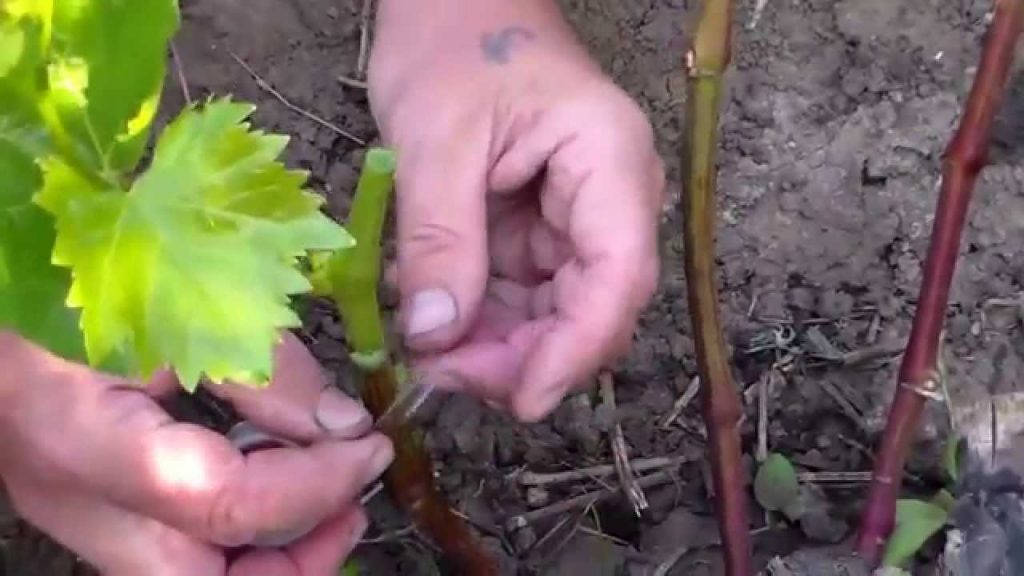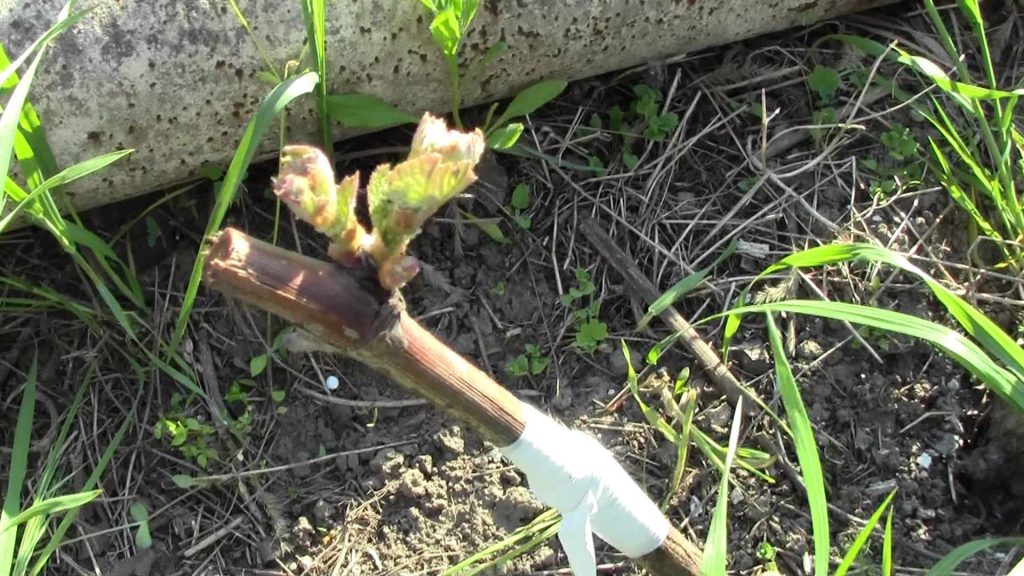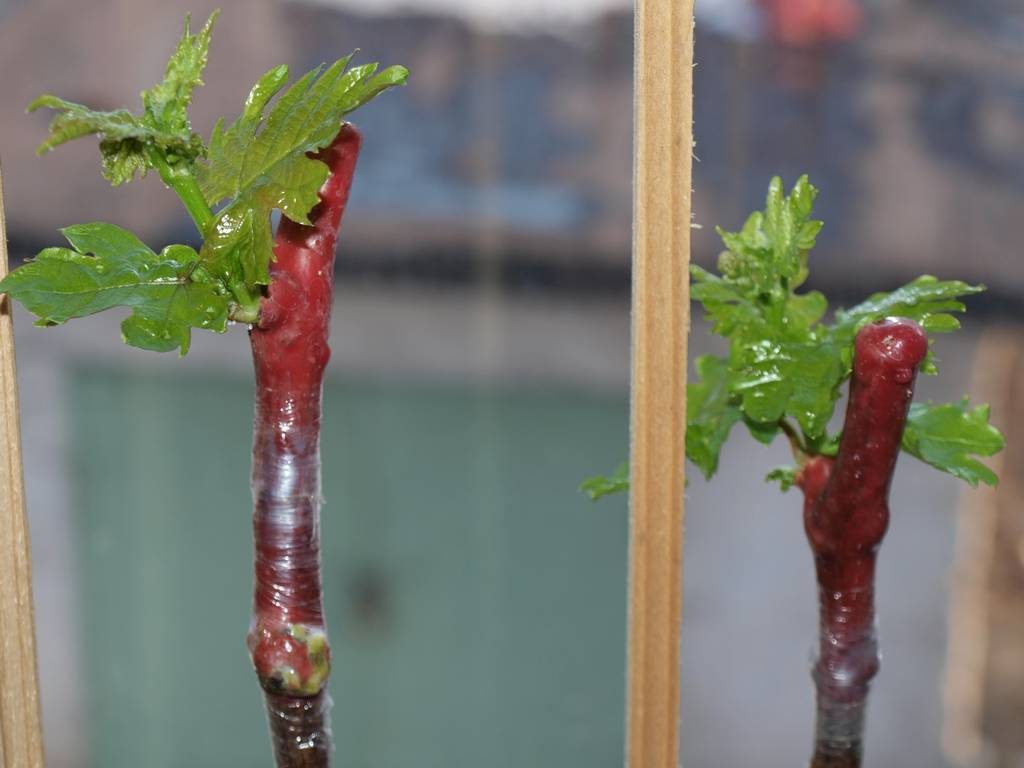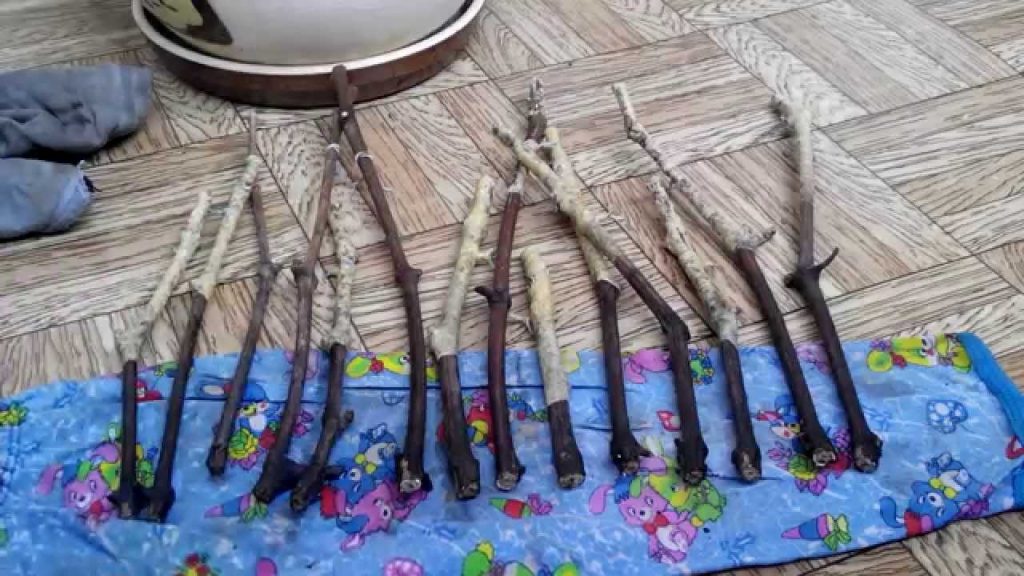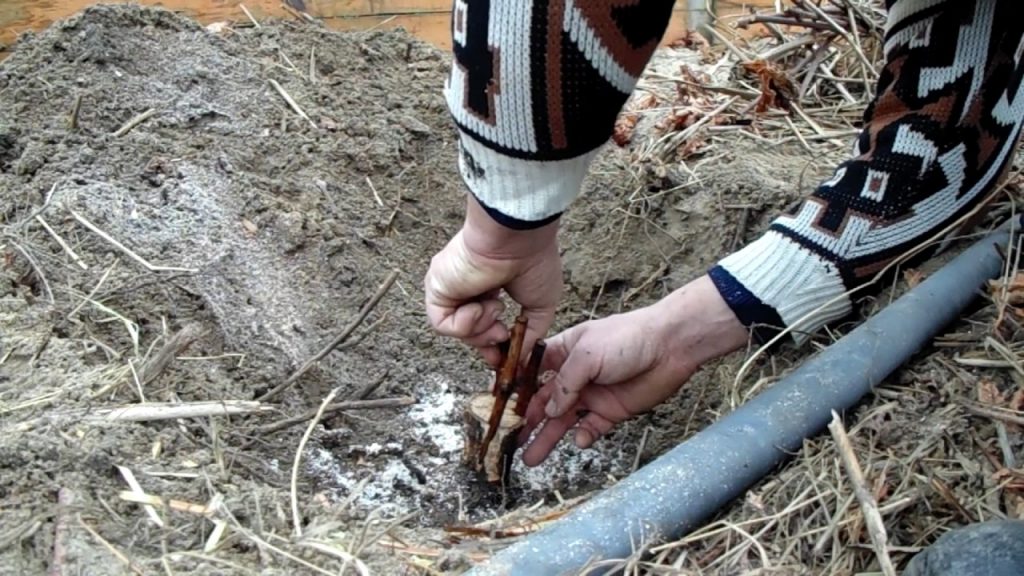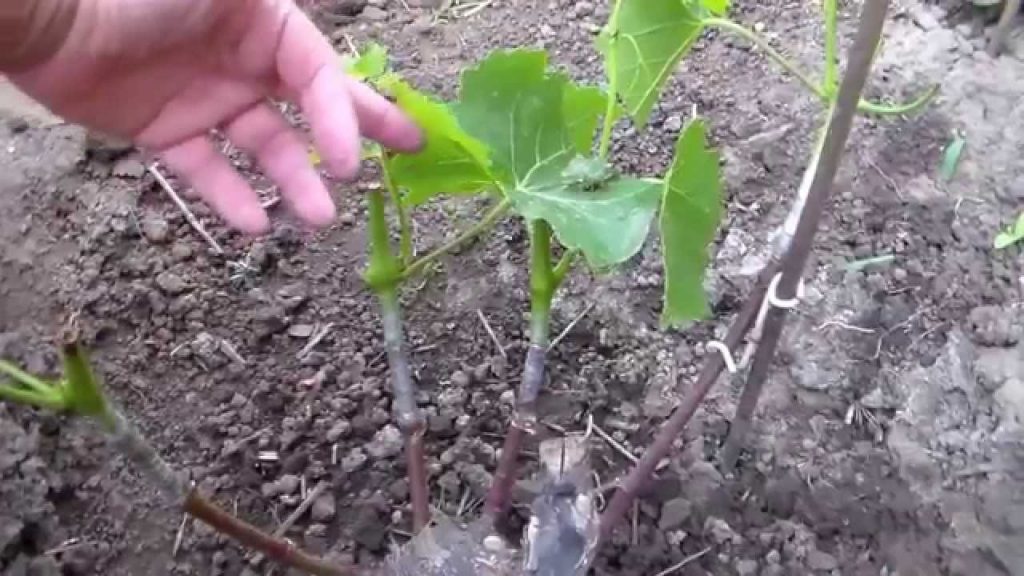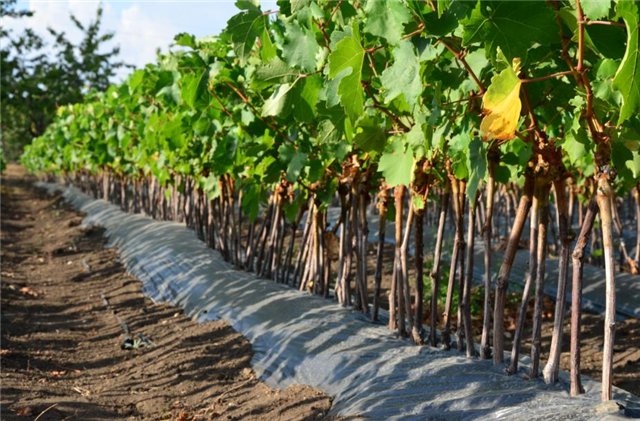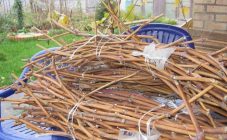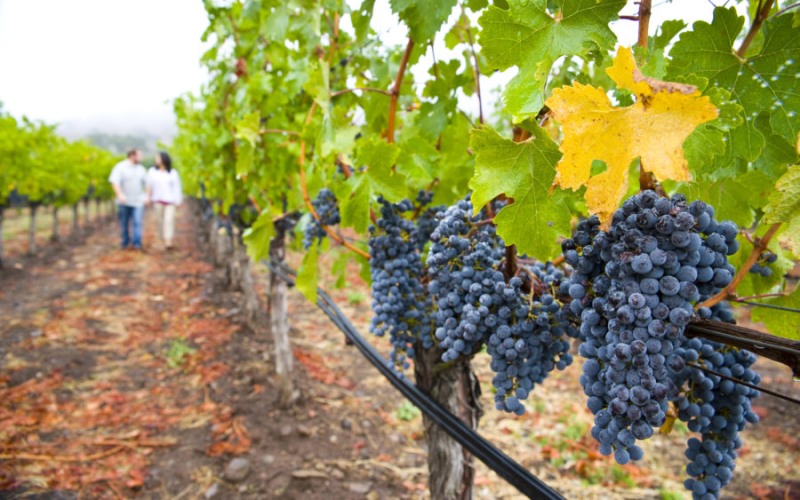Content:
Grafting of grapes is classified as garden surgery. This is a unique process that allows the gardener to significantly improve the properties of the crop independently and without investment. Thanks to grafting, you can rejuvenate, heal the plant, make it more resistant. It is noteworthy that even a novice winegrower can figure out how to plant grapes. The process is not difficult. But you need to know its basics and have an idea of how the operation itself is performed.
What is vaccination
Grafting is the splicing of parts of horticultural varieties. The procedure involves two plants. The first is a rootstock, the second is a scion. The rootstock is a culture that is already growing on the site. It has a root, a stem. A graft is a particle of another plant. Perhaps it is a stalk or a bud. It doesn't matter if the graft and rootstock are of the same variety or different. Most often, different varieties of trees or shrubs are taken.
Grafting or splicing (splitting) of plants is not only a process of healing, improving culture, but also a method of reproduction. The internal structure of the branch (if you cut it across) is a core, followed by wood, cambium, bark. The thinnest layer is cambium. It is an educational fabric. Cambium cells are constantly dividing, thus the plant grows in height, width. If the tree is damaged, it is the cambium that will grow new cells and heal the plant. The main thing in grafting is to combine the cambia of the two plants.
The rootstock and scion are pruned. After the scion is applied or inserted into the stock with the cut. This section of connection is tightly wrapped with tape. It is necessary for the cambiums to connect. Only in this way will the plants grow together.
Vaccination is done in two ways:
- Shank;
- By the kidney.
Shank
Another name for the method is copulation. The selected stalk (scion) is cut. The cut should be even, and its length should be 3 times the diameter of the cutting. The trunk is cut off at the stock. An incision is made on it, where the cutting is inserted. The alignment area is tightly wrapped with tape.
Additional Information. Copulation, in turn, can be performed by different techniques. For example, a stalk (scion) can be inserted into the split of the rootstock trunk, stuck behind the bark with a wedge, placed on the stock with a ledge (or shoulders), inserted into the lateral incision.
By the kidney
This method is called grape budding. It consists in making a small incision on the stock. A kidney cut from the scion is placed in it. The bud is located on the scutellum, which contains a particle of bark, cambium, wood. The place of combination is firmly fixed. This method is often used to propagate fruit trees in nurseries.
Grafting in the vineyard
Grafting of grapes is generally carried out in the same way as with other horticultural crops. The two plants join and grow together. At the same time, the scion retains the properties of the mother plant. The fruits and leaves on it will be exactly the same as on the mother variety.The rootstock, in turn, feeds the scion and also transfers its genetic properties. Of course, grafting of grapes has its own peculiarities. They consist in the timing of the procedure, the choice of worthy rootstock and scion, the stage of growth of the rootstock and scion material.
Such an important agricultural technique as grafting is used throughout the vineyard. It helps if there are malfunctions during the growth of the grape vine. Most often, a gardener will not be able to completely uproot the problem shrub. The best solution is to plant a new variety on it or simply update it. Both of these activities are more convenient to do with vaccination. But splicing is needed not only for this. There is a whole list of reasons that explain the need for admission.
What is the vaccine for?
- Get the grade you want. For example, a gardener planted a shrub vine of a certain variety on the site. When she began to bear fruit, it turned out that the berries were not to the taste of the summer resident. It's a pity to remove the vine. Then another, more delicious variety is grafted onto it;
- Win a seat. If the plot is small, you can graft another variety to one varietal bush of grapes. Then two varieties will grow on one tree. This will intelligently save space in the garden;
- Increase frost resistance. A frost-resistant variety is used as a rootstock, and a variety that adores warmth but gives sweet berries as a scion. Thus, the grower will receive a harvest of delicious berries from a variety that will grow on the trunk of a frost-resistant variety;
- Increase resistance to pests, diseases. The same situation as with frost resistance. Only as a rootstock, a variety is used that has strong immunity and is not susceptible to pest attacks;
- Replacement of varieties. If one variety grew on the site for a long time, which is already tired and boring, it is changed to a new one with the help of vaccination. So it turns out immediately an adult plant with a well-developed root system, a strong stem. That is, time will be saved for growing a new shrub from scratch;
- Plant replacement after freezing. It often happens that a strong frost killed a grape bush. During freezing, the loss of the upper part of the plant is characteristic. The root in the ground does not die. Then vaccination is applied. The stalk is planted on a stem emerging from a developed rhizome. Such a plant rises quickly;
- Reproduction of grapes. Vaccination is one of the most effective vegetative propagation methods of a culture.
Types of grape vaccinations
There are many types of grape grafts. They all have their own characteristics. Different vaccinations are given in different seasons. The timing of the procedure is very important. Only by observing this criterion can plants be successfully spliced.
Black to black
This variety provides for such a degree of maturity of the spliced parts as woody. In this case, the scion and stock should be dormant, the awakening has not yet come. A black stalk is required. Last year's woody shoot is used as a stock. This work is done in the spring, while the buds are asleep and are just about to swell. In the central part of Russia, this procedure is carried out in April.
The shank (shank) is selected in the same size as the stock. The graft material is soaked in water for several days. The vine used for the rootstock is cut or cut. To do this, you need a pruner. The cut is processed with a manganese solution.An incision is made in the middle, where the shank can subsequently be inserted. Wedge-shaped cuts are made on the lower part of the cutting. This pointed part is inserted into the shoot split. The polarity of the plants must be observed. That is, so that when combined, the bud of the cutting looks in the opposite direction with respect to the nearest bud of the rootstock vine. The junction is wrapped tightly with tape.
It is this type of splitting that is used when the question arises of how to plant grapes in the spring on an old bush. The black scion material of the new variety is stuck into the prepared vine of the old sawn bush and fixed. The procedure is advised to be performed in the evening or in cloudy weather in the morning.
To the stem
This look is done in the same way as black to black. But as a stock material, a shrub stem is used. This type of grafting is also used to solve the question: how to graft grapes in the spring on an old bush. Performed before the vineyard has woken up or has already fallen into hibernation, that is, in early spring (April). Late autumn is coming, but not summer. For example, October-early November. The entire upper part of the trunk is cut off. A scion is inserted into the dissected stock. The ideal technique is splitting.
Underground grafting
The type of vaccination "in the stem" includes a subspecies - underground inoculation. It is performed at a temperature of + 10 ... + 14 degrees. The bush is dug in to a depth of 15-20 cm. It is cut down. In the remaining standard stump, the scion is inserted into the cleavage using the technique. You need to do it carefully so as not to split the entire stem to the root. The graft material is placed in the stem so that the uppermost bud of the cutting is 3-6 cm underground. It is recommended to cover the grafting site with clay solution. The inoculation is not covered with earth. Before the grafting site, earth is placed in the hole. Moistened sawdust is placed at the vaccination. Then again a layer of garden soil.
Green to green
Grafting grapes green to green speaks for itself. This is the simplest vaccine. How to plant grapes in this way? A convenient time is chosen. It is best to perform the procedure in the late evening or early morning. The grafting material is prepared from a green vine. An emerald-colored stalk must have one stepson. The lower part of the cutting is sharpened. It is cut in the form of a cone. The stock is cut down. The soda (liquid) should come out. This means that the bush is ready to accept a new element. An incision in the stock is not made in the middle, but slightly closer to the edge. A stalk is placed in the cut. The inoculation is fixed with a film.
The green to green procedure is a summer version of the process. May, June are suitable for work.
Black to green
This type of vaccination is performed in June, July. August is also considered a suitable month. Take a black one-year, two-year-old shank. Its lower part turns into a stake or wedge. The scion is soaked for several days. The correct stock is selected. The vine is well spilled. In the evening, when there is no wind, the upper part of the branch is cut with a pruner. An incision is made. The wedge-shaped part of the cutting is inserted into it.
Budding
The kidney vaccination is done during the summer. But this also has its own peculiarities. If the gardener performs budding in May, June, then the upper part of the rootstock material (which is located above the scion bud) must be cut off with a secateurs. So all the nutrition will be directed to the new part of the plant.
If the bud is transplanted in July, August, then you do not need to touch anything on the shoot. Ideally, the bud is dormant until the next warm season.
The bud is taken from a cutting, the age of which roughly coincides with the age of the stock.It is cut in such a way as to form a shield. That is, the kidney is in the middle of this shield. The scutellum captures bark, cambium and some wood. A similar cut is made on the rootstock. The shield is applied to the stock. The junction is moistened, fixed with a cloth, plaster.
Advantages and disadvantages of types of vaccinations
Each type has its own advantages and disadvantages:
- The most popular is the bole vaccination. However, the disadvantage here is the laboriousness and the choice of the right time. The best time is early spring or late autumn. The main advantage is the good survival rate of the scion to the stock;
- The lightest can be called green to green. Even the winegrower, who is just beginning to learn all the wisdom of the matter, can cope with it. In addition, no special preparatory work is required. The graft material is torn off on the day of vaccination. The disadvantage of the method is that it is difficult to achieve 100% survival rate in this way;
- Another popular look is black-to-black. Splicing here is almost one hundred percent. However, this variety requires lengthy preparation - cuttings are prepared in the fall;
- Black to green has several disadvantages when compared to other types of vaccinations. First, the laboriousness of the procedure, which concerns the harvesting and processing of the cutting. In order for the grafting material to survive until summer, it must be waxed. This is done in the spring. Pieces of vine ready for grafting are dipped in paraffin. Then they take it out of the paraffin (the temperature should be 80%) and transfer it to cold water. They can be stored in a bag in the refrigerator or underground until summer. Secondly, due to the different growth stages of the rootstock and scion, the clothespin does not always work well;
- Budding is not a common method for ordinary gardeners. Most often it is carried out for breeding varieties in nurseries. This type of vaccination is quite laborious. It is not so easy to correctly and accurately cut the bud from the plant without damaging it, and then transplanting the vines to the prepared place. Budding is carried out in the event that the spring splicing by cuttings failed.
Instructions and recommendations
Cutting preparation
- Before pinching the grapes, cuttings are harvested. This is best done at the end of autumn. You can select the shank during the autumn crop pruning. Each part of the branch should have at least 4 eyes. The length of the scion is about 7-11 cm. It is better to store the scion material in the refrigerator in a bag. If there is a cellar or underground, you can leave the cuttings there for the winter;
- After winter, the cuttings are examined. One or more healthy samples are selected;
- Before grafting grapes, the scion material is soaked for several days in water. Thus, a bud will appear on the handle, starting to swell;
- It is necessary to monitor the thickness of the rootstock and scion. The stock should not be thinner. The ideal scion diameter is the diameter of a pencil;
- The shank is sharpened in such a way that the wedge turns out to be even. If it is bent, the process will fail.
Stock preparation
The plant that will be grafted is also prepared in the fall. The bush is pruned, reliably covered for the winter. They open it a few days before the planned work, moisten it.
Tools that are needed for the procedure:
- Sharp grafting knife;
- Secateurs;
- Tape for fixing the connected parts of the plant;
- Alcohol for disinfection of the knife or manganese solution;
- Gauze that is moistened with alcohol and which is used to wipe the instrument.
Care
The vaccine must be cared for. The bush is monitored every week. The gardener observes how the fusion takes place, whether there is a growth of the petiole. The junction needs to be protected from sunlight. The roots of the scion that extend outside and not into the scion are removed. When a 30-centimeter shoot extends from the cutting, it must be pinched. So the shrub will grow and develop with dignity. The soil under the vine is loosened so that the roots are saturated with oxygen.
Master the basics of garden surgery and independently inoculate grapes according to the power of even a novice winegrower. This is a useful procedure.If you learn to carry it out correctly, then you can independently improve the quality of the grape vine, get delicious berries. The shrub gives the first harvest after grafting in 2 years.
